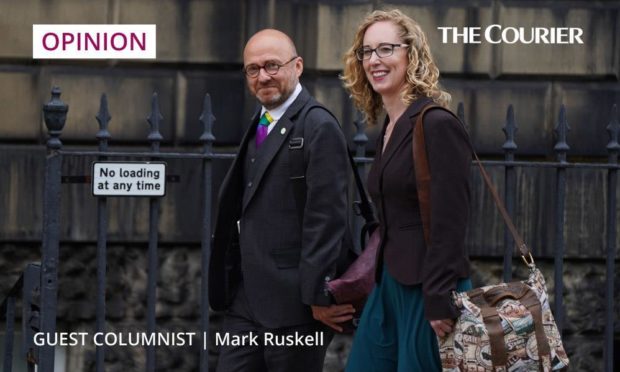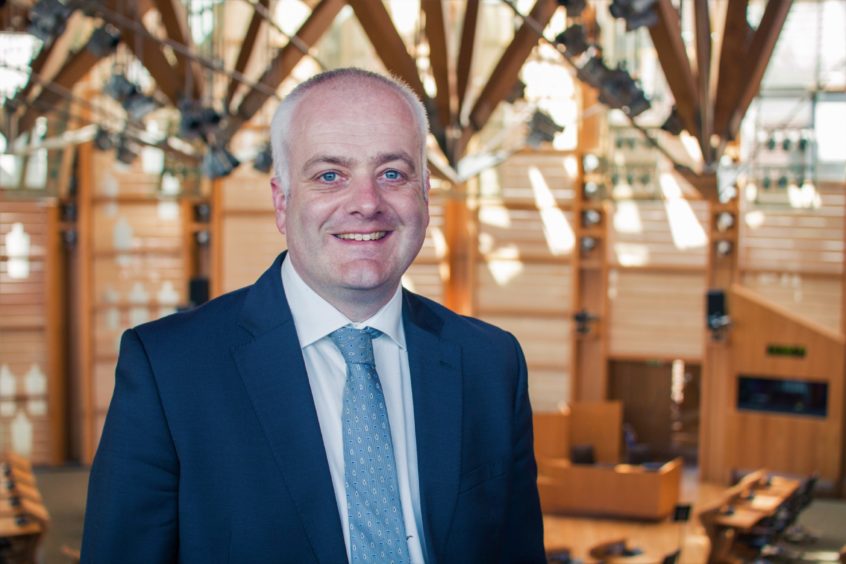For decades Scotland’s model of living alongside and within nature has failed us.
Fragments of our land and sea get offered protection, at least on paper, while the rest continues to be degraded.
And yet trawling and dredging still takes place in marine protected areas. Unique dune systems can become golf courses if the developer is powerful enough.
Over the summer, I’ve been working with my Green colleagues and with the Scottish Government to define a new relationship with nature.
It’s these proposals that will go to our membership for a vote on Saturday.
What’s on the table is a truly transformative change in that relationship with our natural world.
That change is most obviously defined by what the 15,000 word draft agreement doesn’t include once: the word “conservation”.
If our terrestrial and marine wild spaces were in great shape, perhaps conservation would be the right approach.
But, in the midst of an escalating biodiversity crisis, conservation as a framework risks being little more than well-managed decline.
The dominant theme in the Green/SNP proposals is instead nature restoration – or re-wilding, if you prefer.
Government must play a constructive role here, but the real transformation will be delivered by nature itself.
Re-wilding is already in action
Despite the daily environmental bad news, life constantly strives to grow and spread.
As an example, these plans would allow the relocation of beavers to areas with local community support, so more parts of Scotland can benefit from enhanced biodiversity, flood prevention, tourism and the rest.
At sea, the results are obvious when places like the Lamlash no-take zone are allowed to recover.
What was becoming a marine desert is now an extraordinary haven for all sorts of plants and creatures.
We just need to give these processes the space and support to work.
This concept of nature restoration, fundamental to the Green manifesto, is therefore woven throughout these plans, not restricted to the natural environment section.
It’s in energy policy: where we propose to expand offshore wind in a way that supports ecological restoration of the surrounding seas.
Our economic recovery from the pandemic will require government investment, and expansion of the new nature restoration fund, a recent Green budget win, will be one vital strand of that.
Next year, if the deal is approved, Green Ministers will work with SNP colleagues to deliver a more ambitious biodiversity strategy, with legislation following the year after.
That legislation would focus on preventing further extinctions, and on starting to turn around the supertanker of wildlife decline, alongside binding nature targets.
By 2030, if we act quickly, we should see a rebound in species abundance and distribution.
Nature key to planning process
Over that same timescale we would also protect 30% of our land and sea, with a further 10% being highly protected.
Planning rules will be turned around to support nature networks across the country.
These will reduce the impact of climate change on plants and animals and allowing them to extend their ranges.
Rewilding, done right, brings substantial economic benefits.
Across rural Scotland, this is a plan for substantial employment alongside nature restoration.
Both parties are clear: repopulation is part of our agenda.
The line drawn between wild spaces and inhabited spaces is artificial and unhelpful to both.
It leads to sterile towns, deprived of green spaces, and a countryside which is too often neglected and short of investment.
The plan for at least one new National Park is all about delivering ecological and economic benefits together.
Despite our incredible landscapes, the last new National Park in Scotland was created 18 years ago, and it’s time to expand the network.
Our world is changing. The next 5 years will have an impact on all who live, visit & work here. Right now we need your views to shape the future of the Park, make sure our work focuses on the issues that matter.
Share your views here: https://t.co/F37OxhDuXe#CairngormsViews pic.twitter.com/t4ZpcXYIdj— Cairngorms National Park (@cairngormsnews) July 29, 2021
We also want to see proposals for marine parks coming forward.
Like national parks, these are spaces where people and nature can thrive together; where you can eat an ice-cream while trying to spot a pine marten or a minke whale.
The deal will also see more funding and support to create native woodlands, helping tackle the climate and nature emergencies.
Nature helped us heal in the pandemic
I believe this concerted and determined effort to restore Scotland’s nature and landscapes could not come at a better time.
The last few years have introduced so many of us to the joys of wild places, and demonstrated the importance of access to good quality green space.
As we emerge from the pandemic, let’s not forget that.
The green movement was founded over concern about habitat and wildlife loss.
Our politics have grown and evolved over the decades.
The housing market is distorted, putting investors' interests ahead of the human right to housing.
Rent controls and tenants' rights are one of the most important things in the cooperation agreement @scottishgreens members will vote on this weekend.https://t.co/Zj283LqAky— Patrick Harvie 🇪🇺🌈 (@patrickharvie) August 25, 2021
But it would have been unthinkable to consider going into government for the first time without a transformational plan for nature.
I hope our membership back the plans, and then hold us to account as we work to deliver these changes.
On land and at sea, these proposals are the start of the rethink we need to see.











